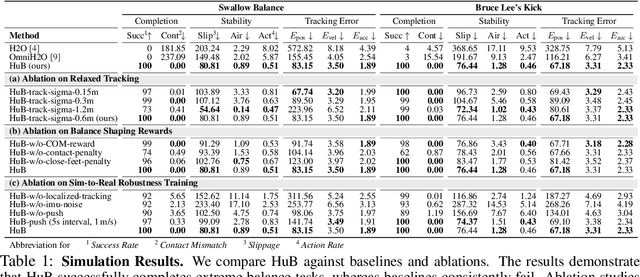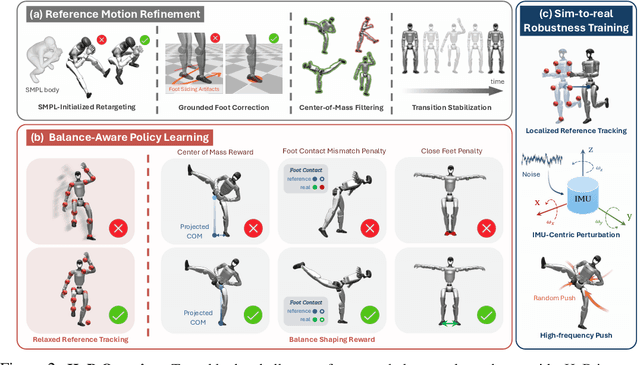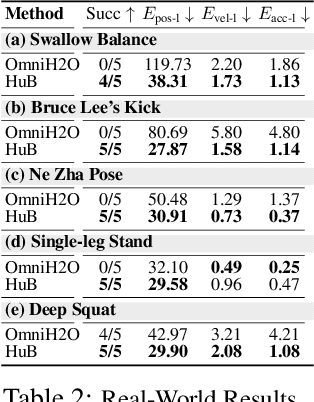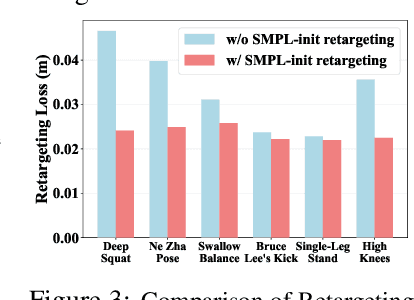Geng Chen
PeftCD: Leveraging Vision Foundation Models with Parameter-Efficient Fine-Tuning for Remote Sensing Change Detection
Sep 11, 2025Abstract:To tackle the prevalence of pseudo changes, the scarcity of labeled samples, and the difficulty of cross-domain generalization in multi-temporal and multi-source remote sensing imagery, we propose PeftCD, a change detection framework built upon Vision Foundation Models (VFMs) with Parameter-Efficient Fine-Tuning (PEFT). At its core, PeftCD employs a weight-sharing Siamese encoder derived from a VFM, into which LoRA and Adapter modules are seamlessly integrated. This design enables highly efficient task adaptation by training only a minimal set of additional parameters. To fully unlock the potential of VFMs, we investigate two leading backbones: the Segment Anything Model v2 (SAM2), renowned for its strong segmentation priors, and DINOv3, a state-of-the-art self-supervised representation learner. The framework is complemented by a deliberately lightweight decoder, ensuring the focus remains on the powerful feature representations from the backbones. Extensive experiments demonstrate that PeftCD achieves state-of-the-art performance across multiple public datasets, including SYSU-CD (IoU 73.81%), WHUCD (92.05%), MSRSCD (64.07%), MLCD (76.89%), CDD (97.01%), S2Looking (52.25%) and LEVIR-CD (85.62%), with notably precise boundary delineation and strong suppression of pseudo-changes. In summary, PeftCD presents an optimal balance of accuracy, efficiency, and generalization. It offers a powerful and scalable paradigm for adapting large-scale VFMs to real-world remote sensing change detection applications. The code and pretrained models will be released at https://github.com/dyzy41/PeftCD.
M2IO-R1: An Efficient RL-Enhanced Reasoning Framework for Multimodal Retrieval Augmented Multimodal Generation
Aug 08, 2025Abstract:Current research on Multimodal Retrieval-Augmented Generation (MRAG) enables diverse multimodal inputs but remains limited to single-modality outputs, restricting expressive capacity and practical utility. In contrast, real-world applications often demand both multimodal inputs and multimodal outputs for effective communication and grounded reasoning. Motivated by the recent success of Reinforcement Learning (RL) in complex reasoning tasks for Large Language Models (LLMs), we adopt RL as a principled and effective paradigm to address the multi-step, outcome-driven challenges inherent in multimodal output generation. Here, we introduce M2IO-R1, a novel framework for Multimodal Retrieval-Augmented Multimodal Generation (MRAMG) that supports both multimodal inputs and outputs. Central to our framework is an RL-based inserter, Inserter-R1-3B, trained with Group Relative Policy Optimization to guide image selection and placement in a controllable and semantically aligned manner. Empirical results show that our lightweight 3B inserter achieves strong reasoning capabilities with significantly reduced latency, outperforming baselines in both quality and efficiency.
HuB: Learning Extreme Humanoid Balance
May 12, 2025



Abstract:The human body demonstrates exceptional motor capabilities-such as standing steadily on one foot or performing a high kick with the leg raised over 1.5 meters-both requiring precise balance control. While recent research on humanoid control has leveraged reinforcement learning to track human motions for skill acquisition, applying this paradigm to balance-intensive tasks remains challenging. In this work, we identify three key obstacles: instability from reference motion errors, learning difficulties due to morphological mismatch, and the sim-to-real gap caused by sensor noise and unmodeled dynamics. To address these challenges, we propose HuB (Humanoid Balance), a unified framework that integrates reference motion refinement, balance-aware policy learning, and sim-to-real robustness training, with each component targeting a specific challenge. We validate our approach on the Unitree G1 humanoid robot across challenging quasi-static balance tasks, including extreme single-legged poses such as Swallow Balance and Bruce Lee's Kick. Our policy remains stable even under strong physical disturbances-such as a forceful soccer strike-while baseline methods consistently fail to complete these tasks. Project website: https://hub-robot.github.io
FP3: A 3D Foundation Policy for Robotic Manipulation
Mar 11, 2025Abstract:Following its success in natural language processing and computer vision, foundation models that are pre-trained on large-scale multi-task datasets have also shown great potential in robotics. However, most existing robot foundation models rely solely on 2D image observations, ignoring 3D geometric information, which is essential for robots to perceive and reason about the 3D world. In this paper, we introduce FP3, a first large-scale 3D foundation policy model for robotic manipulation. FP3 builds on a scalable diffusion transformer architecture and is pre-trained on 60k trajectories with point cloud observations. With the model design and diverse pre-training data, FP3 can be efficiently fine-tuned for downstream tasks while exhibiting strong generalization capabilities. Experiments on real robots demonstrate that with only 80 demonstrations, FP3 is able to learn a new task with over 90% success rates in novel environments with unseen objects, significantly surpassing existing robot foundation models.
A Remote Sensing Image Change Detection Method Integrating Layer Exchange and Channel-Spatial Differences
Jan 19, 2025



Abstract:Change detection in remote sensing imagery is a critical technique for Earth observation, primarily focusing on pixel-level segmentation of change regions between bi-temporal images. The essence of pixel-level change detection lies in determining whether corresponding pixels in bi-temporal images have changed. In deep learning, the spatial and channel dimensions of feature maps represent different information from the original images. In this study, we found that in change detection tasks, difference information can be computed not only from the spatial dimension of bi-temporal features but also from the channel dimension. Therefore, we designed the Channel-Spatial Difference Weighting (CSDW) module as an aggregation-distribution mechanism for bi-temporal features in change detection. This module enhances the sensitivity of the change detection model to difference features. Additionally, bi-temporal images share the same geographic location and exhibit strong inter-image correlations. To construct the correlation between bi-temporal images, we designed a decoding structure based on the Layer-Exchange (LE) method to enhance the interaction of bi-temporal features. Comprehensive experiments on the CLCD, PX-CLCD, LEVIR-CD, and S2Looking datasets demonstrate that the proposed LENet model significantly improves change detection performance. The code and pre-trained models will be available at: https://github.com/dyzy41/lenet.
UniHOI: Learning Fast, Dense and Generalizable 4D Reconstruction for Egocentric Hand Object Interaction Videos
Nov 14, 2024Abstract:Egocentric Hand Object Interaction (HOI) videos provide valuable insights into human interactions with the physical world, attracting growing interest from the computer vision and robotics communities. A key task in fully understanding the geometry and dynamics of HOI scenes is dense pointclouds sequence reconstruction. However, the inherent motion of both hands and the camera makes this challenging. Current methods often rely on time-consuming test-time optimization, making them impractical for reconstructing internet-scale videos. To address this, we introduce UniHOI, a model that unifies the estimation of all variables necessary for dense 4D reconstruction, including camera intrinsic, camera poses, and video depth, for egocentric HOI scene in a fast feed-forward manner. We end-to-end optimize all these variables to improve their consistency in 3D space. Furthermore, our model could be trained solely on large-scale monocular video dataset, overcoming the limitation of scarce labeled HOI data. We evaluate UniHOI with both in-domain and zero-shot generalization setting, surpassing all baselines in pointclouds sequence reconstruction and long-term 3D scene flow recovery. UniHOI is the first approach to offer fast, dense, and generalizable monocular egocentric HOI scene reconstruction in the presence of motion. Code and trained model will be released in the future.
Identifying Influential nodes in Brain Networks via Self-Supervised Graph-Transformer
Sep 17, 2024


Abstract:Studying influential nodes (I-nodes) in brain networks is of great significance in the field of brain imaging. Most existing studies consider brain connectivity hubs as I-nodes. However, this approach relies heavily on prior knowledge from graph theory, which may overlook the intrinsic characteristics of the brain network, especially when its architecture is not fully understood. In contrast, self-supervised deep learning can learn meaningful representations directly from the data. This approach enables the exploration of I-nodes for brain networks, which is also lacking in current studies. This paper proposes a Self-Supervised Graph Reconstruction framework based on Graph-Transformer (SSGR-GT) to identify I-nodes, which has three main characteristics. First, as a self-supervised model, SSGR-GT extracts the importance of brain nodes to the reconstruction. Second, SSGR-GT uses Graph-Transformer, which is well-suited for extracting features from brain graphs, combining both local and global characteristics. Third, multimodal analysis of I-nodes uses graph-based fusion technology, combining functional and structural brain information. The I-nodes we obtained are distributed in critical areas such as the superior frontal lobe, lateral parietal lobe, and lateral occipital lobe, with a total of 56 identified across different experiments. These I-nodes are involved in more brain networks than other regions, have longer fiber connections, and occupy more central positions in structural connectivity. They also exhibit strong connectivity and high node efficiency in both functional and structural networks. Furthermore, there is a significant overlap between the I-nodes and both the structural and functional rich-club. These findings enhance our understanding of the I-nodes within the brain network, and provide new insights for future research in further understanding the brain working mechanisms.
EfficientCD: A New Strategy For Change Detection Based With Bi-temporal Layers Exchanged
Jul 22, 2024Abstract:With the widespread application of remote sensing technology in environmental monitoring, the demand for efficient and accurate remote sensing image change detection (CD) for natural environments is growing. We propose a novel deep learning framework named EfficientCD, specifically designed for remote sensing image change detection. The framework employs EfficientNet as its backbone network for feature extraction. To enhance the information exchange between bi-temporal image feature maps, we have designed a new Feature Pyramid Network module targeted at remote sensing change detection, named ChangeFPN. Additionally, to make full use of the multi-level feature maps in the decoding stage, we have developed a layer-by-layer feature upsampling module combined with Euclidean distance to improve feature fusion and reconstruction during the decoding stage. The EfficientCD has been experimentally validated on four remote sensing datasets: LEVIR-CD, SYSU-CD, CLCD, and WHUCD. The experimental results demonstrate that EfficientCD exhibits outstanding performance in change detection accuracy. The code and pretrained models will be released at https://github.com/dyzy41/mmrscd.
CC-DCNet: Dynamic Convolutional Neural Network with Contrastive Constraints for Identifying Lung Cancer Subtypes on Multi-modality Images
Jul 18, 2024



Abstract:The accurate diagnosis of pathological subtypes of lung cancer is of paramount importance for follow-up treatments and prognosis managements. Assessment methods utilizing deep learning technologies have introduced novel approaches for clinical diagnosis. However, the majority of existing models rely solely on single-modality image input, leading to limited diagnostic accuracy. To this end, we propose a novel deep learning network designed to accurately classify lung cancer subtype with multi-dimensional and multi-modality images, i.e., CT and pathological images. The strength of the proposed model lies in its ability to dynamically process both paired CT-pathological image sets as well as independent CT image sets, and consequently optimize the pathology-related feature extractions from CT images. This adaptive learning approach enhances the flexibility in processing multi-dimensional and multi-modality datasets and results in performance elevating in the model testing phase. We also develop a contrastive constraint module, which quantitatively maps the cross-modality associations through network training, and thereby helps to explore the "gold standard" pathological information from the corresponding CT scans. To evaluate the effectiveness, adaptability, and generalization ability of our model, we conducted extensive experiments on a large-scale multi-center dataset and compared our model with a series of state-of-the-art classification models. The experimental results demonstrated the superiority of our model for lung cancer subtype classification, showcasing significant improvements in accuracy metrics such as ACC, AUC, and F1-score.
SimTxtSeg: Weakly-Supervised Medical Image Segmentation with Simple Text Cues
Jun 27, 2024



Abstract:Weakly-supervised medical image segmentation is a challenging task that aims to reduce the annotation cost while keep the segmentation performance. In this paper, we present a novel framework, SimTxtSeg, that leverages simple text cues to generate high-quality pseudo-labels and study the cross-modal fusion in training segmentation models, simultaneously. Our contribution consists of two key components: an effective Textual-to-Visual Cue Converter that produces visual prompts from text prompts on medical images, and a text-guided segmentation model with Text-Vision Hybrid Attention that fuses text and image features. We evaluate our framework on two medical image segmentation tasks: colonic polyp segmentation and MRI brain tumor segmentation, and achieve consistent state-of-the-art performance.
 Add to Chrome
Add to Chrome Add to Firefox
Add to Firefox Add to Edge
Add to Edge